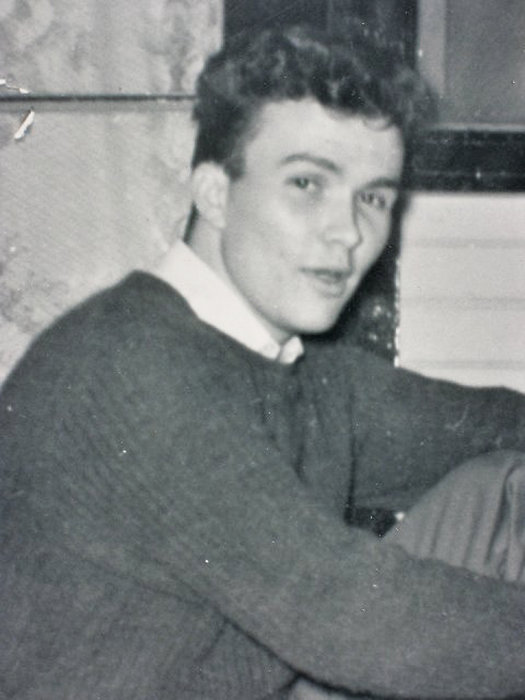In 1957, Union City resident Eddie Kelly was 16, and the tallest teen on Dick Clark’s after school top-40 dance show “American Bandstand.”
It wasn’t necessarily about how well you danced, he said in an interview last week, but how well you danced with those who had worked their way into the inner circle of show participants – known as “regulars” – who had become the idols of millions of teens across the nation.
The day Maryann Cuff beckoned Kelly down from the obscurity of the bleachers and into the spotlight was the day he became part of history as a regular on the iconic show.
“Now when I think of it, we really didn’t give other kids a chance to dance in front of the camera,” Kelly recalled. “We were teenagers then, so we didn’t really care. But when I look back, I wonder why Dick did that.”
Clark would call the core teens to the front at 4 p.m. when the show switched from local to national air time, and the newer kids were left behind unseen by the cameras.
The non-regulars weren’t the only ones left behind. Before the show was moved to California in 1964, it was segregated, and went on to inspired the premise of John Waters’ musical film “Hairspray.”
“There were a lot of issues back then that minorities faced,” Kelly said. “The ’50s and ’60s were different times, but as years went on it got better.”
“When Carmen streaked her hair, all the girls did it.” – Eddie Kelly
____________
“It’s such an honor to be on the plaque,” Kelly said. “I have no grandchildren, so I’m the last of the Kellys. Now the name will live on at 46th and Market Street.”
The fantasy behind the fame
The show played itself out like a soap opera, Kelly said. Viewers would write in with their opinions as to who was the better dancer, which couple went well together and which did not.
The day Kelly stopped dancing with Joanie, one of his later partners, the viewers asked why they’d broken up.
“They created this fantasy,” Kelly said. “The only real couple was Justine and Bob, and they were really in love. They became household names, but they broke up after the show.”
“American Bandstand” had 12 million viewers per day. Teens everywhere followed the show as closely as they did their own lives. What the stars wore, they wore. And what the stars did, they turned into a sort of television drama that was created entirely by their feedback and fantastical perception.
“When Carmen [a regular] streaked her hair, all the girls did it,” Kelly said. In fact, the streak graced the hair of Tracy Turnblad, the main character in the film and musical “Hairspray.”
Teen viewers started fan clubs for their favorite dancers and turned them into instant celebrities. Some fans even paid for regulars to travel to visit them.
In 1961, a woman by the name of Grace Gifford wrote in to Clark saying Kelly resembled her son Ron, who was in the air force at the time. Clark read the letter on the air and interviewed Kelly, and arrangements were made for Kelly to visit the family in Muskegon, Wisc.
He spent the week and made a few appearances at record hops (dances held at school auditoriums and churches) in Milwaukee and met Gifford’s husband and 7-year-old daughter, Debbie.
A month ago, Kelly got a message from Debbie through Facebook along with photos of their visit.
“It was incredible to hear from her after all these years,” Kelly said. “It’s just too bad we couldn’t find each other before Grace passed away.”
American show, American icon
The show began as “Bandstand” in Philly in 1952 and ran locally on WFIL Channel 6. It broadcast short musical films until then-host Bob Horn, who had a radio show on the same station, decided to make it the teen dance production that became famous.
Horn was fired in 1956 after a drunk driving arrest, and WFIL picked up Clark, who pitched the show to ABC the following year as “American Bandstand.” The show was said to kick-start Clark’s career as an American media mogul, and saw its final broadcast in 1964.
But the legend lived on in the many shows it influenced, such as “Soul Train” and, some would argue, in the plethora of dance and music-based reality television programs seen today.
“Dick always included me in anniversary specials,” Kelly said. “In 1985, I and two other couples surprised him on Oprah.”
Kelly made an appearance in a documentary “Bandstand Days” in 1997 and represented the show in the “American Bandstand Anniversary Special 33 1/3” in Santa Monica, Calif. He has been a guest on “The Today Show” and was featured with his most famous dancing partner Bunny in the television series “American Dreams.” Kelly continues to work in film to this day.
For more information on “American Bandstand,” visit the website of Kelly’s co-star Charles Amann, theprincesandprincessesofdance.com.
Gennarose Pope may be reached at gpope@hudsonreporter.com
